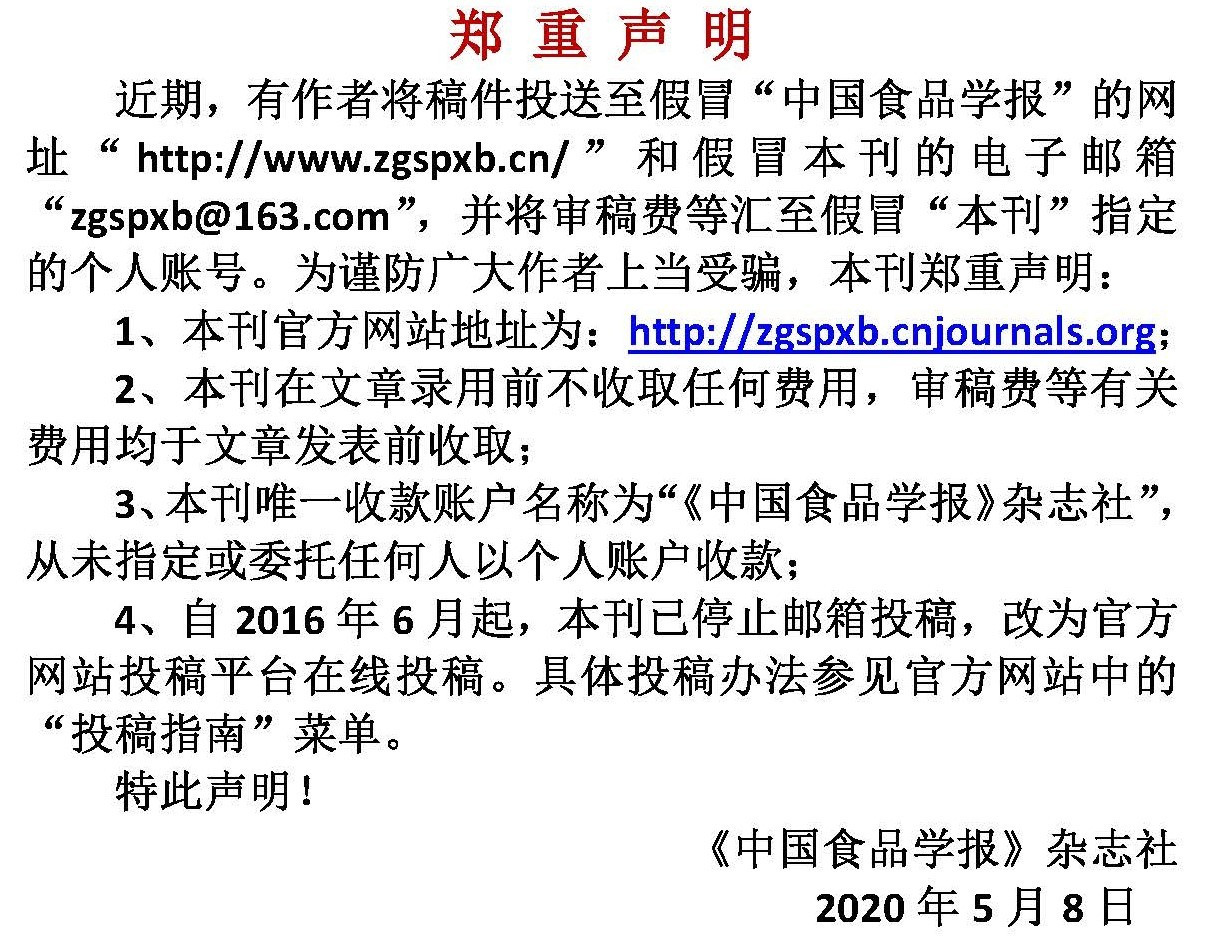发酵方式对苹果幼果果酒品质及香气成分的影响
作者:
作者单位:
(1.山西农业大学食品科学与工程学院 山西晋中 030801;2.江苏省农业科学院农产品加工研究所 南京 210014;3.晋中国家农高区管理委员会 山西晋中 030800)
作者简介:
通讯作者:
中图分类号:
基金项目:
吕梁市重点研发计划项目(2021NYGG-2-38);山西省农业重大技术协同推广计划项目(2022xttg03-05)
Effects of Fermentation Methods on the Quality and Aroma Composition of Young Apple Fruit Wines
Author:
Affiliation:
(1.College of Food Science and Engineering, Shanxi Agricultural University, Jinzhong 030801, Shanxi;2.Institute of Agro-Products Processing, Jiangsu Academy of Agricultural Sciences, Nanjing 210014;3.Jinzhong National Agricultural Hi-tech Industries Demonstration Zone, Jinzhong 030800, Shanxi)
Fund Project:
引用本文
安琪,张霞,郭玉琪,马艳弘,王翔,王愈.发酵方式对苹果幼果果酒品质及香气成分的影响[J].中国食品学报,2025,(1):335-347
复制分享
文章指标
- 点击次数:
- 下载次数:
- HTML阅读次数:
历史
- 收稿日期:2024-01-15
- 最后修改日期:
- 录用日期:
- 在线发布日期: 2025-03-05
- 出版日期:
文章二维码

版权所有 :《中国食品学报》杂志社 京ICP备09084417号-4
地址 :北京市海淀区阜成路北三街8号9层 邮政编码 :100048
电话 :010-65223596 65265375 电子邮箱 :chinaspxb@vip.163.com
技术支持:北京勤云科技发展有限公司
地址 :北京市海淀区阜成路北三街8号9层 邮政编码 :100048
电话 :010-65223596 65265375 电子邮箱 :chinaspxb@vip.163.com
技术支持:北京勤云科技发展有限公司
